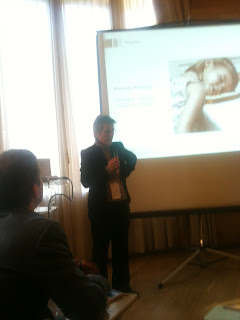My Highlights from The Digital Workplace Trends Report 2012 by @netjmc - part 2

In my last post I shared some of my highlights from Jane McConnell 's Global Digital Workplace Trends 2012 report. We left off describing how some organizations used their intranet to support employees in the field. This brings us to the mobile intranet. Mobiel intranet Delivering the intranet and digital workplace to mobile was seen as important by 7% of the respondents in 2011. In 2012 30% thinks mobile is important and is investing. I'm disappointed to see that IT is defining the strategy in this area, according to the report. The goal of mobile is to improve communication and productivity. Corporate news and the people finder are the most important mobile intranet features. I would hope mobile is a business initiative with business in the lead and that the mobile features would be more closely related to the core business processes. I'm curious what we'll see in next year's report with respect to mobile. A special finding from the report was that or...







.JPG)
.JPG)